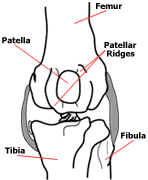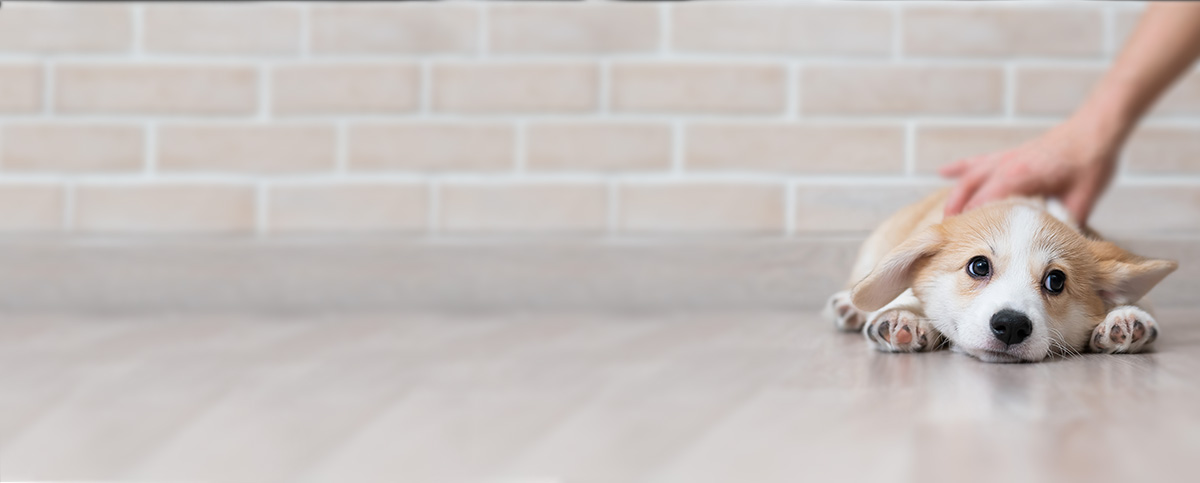Patellar Luxation
Patellar luxation is one of the most common orthopedic issues seen in dogs.
 Patella is another name for kneecap, which is the small bone in the patellar tendon that rides in a groove on the top of the knee. When your pet bends and extends their knee, the patella normally moves up and down in the groove. When it luxates, that means that it moves out of the groove to one side or the other.
Patella is another name for kneecap, which is the small bone in the patellar tendon that rides in a groove on the top of the knee. When your pet bends and extends their knee, the patella normally moves up and down in the groove. When it luxates, that means that it moves out of the groove to one side or the other.
Patellar luxation is graded 1-4, with one being the least severe.
Patellar luxation causes problems when the patella comes out of the groove regularly, causing damage to the cartilage that lines the joint, and leading to arthritis. In cases where it moves in and out of the groove, it is important to get it corrected surgically before damage is done. Uncorrected patellar luxation can be debilitating in some dogs.
Reasons why the patella luxates (comes out of the groove):
- Shallow groove Abnormal attachment - tendon pulls it to one side
- Abnormal bone formation
- Traumatic injury causing ligament malfunction/tearing
- Combinations of these factors
Patella luxation has a genetic component and these dogs should not be bred.
Small breed dogs are the most commonly affected with this disease, but it is also seen in cats and some large breed dogs.
Commonly affected breeds:
- Poodles
- Chihuahuas
- Yorkies
- Pomeranians
- Boston Terriers
- Shar-peis
- Akitas
- Great Pyrenees
Signs
If your pet is not diagnosed on routine physical exam, they may be diagnosed because they show some lameness. Common signs are stepping down, crying, and holding up the leg for a short period of time. Many dogs will not show any pain in between these episodes. This occurs when the kneecap slips out of the groove and gets stuck or comes out and slides back in causing pain. Once a dog starts having these episodes, they are likely to continue, and surgical repair is recommended as soon as possible.
Many dogs will have both knees affected.
Dogs with severe untreated patellar luxation can walk crouched down with their knees pointed out or even refuse to use the affected leg(s).
Diagnosis
Diagnosis is achieved by your veterinarian feeling your dog’s knees and palpating for looseness of the patella.
Patellar luxation can often be diagnosed in puppies at their initial visit. However, it is important to note that just because the puppy has patellar luxation, it does not mean they must have a surgical correction.
Treatment
For puppies diagnosed with patellar luxation, physical therapy can help prevent the need for surgery in the future. This can be as simple as “Sit to Stand” exercises at home. Have your puppy sit and then stand repeatedly – ideally 100 repetitions per day. This helps carve out the groove and tighten the ligaments with regular use. Make sure your pup sits squarely with their knees under them when doing this exercise.
For dogs with lameness, surgical repair should be performed as soon as possible. Surgical goals include deepening the groove, moving the bony attachments to cause the patella to ride in a straight line, and tightening ligaments. Each patient may require a different combination of these procedures.
Joint supplements can help treat arthritis and are recommended for most patients with patellar luxation.
Resources:
https://www.hillspet.com/dog-care/healthcare/luxating-patella-in-dogs
https://www.acvs.org/small-animal/patellar-luxations
https://veterinarypartner.vin.com/default.aspx?pid=19239&id=4952566
Video:
Cookies on this website are used to both support the function and performance of the site, and also for marketing purposes, including personalizing content and tailoring advertising to your interests. To manage marketing cookies on this website, please select the button that indicates your preferences. More information can be found in our privacy policy here.
We've upgraded our online store!
Ordering your pet's favorite food and medicine is now easier than ever.
Order Food & Meds
Quick & Easy Registration

Please use the phone number and email you currently use for hospital communications to link your account!
Linked Pet Records & Rx

Your pet's prescriptions and records will be waiting for you!
Pawsome
Savings!

AutoShip discounts, promotions on your favorite products and more!


